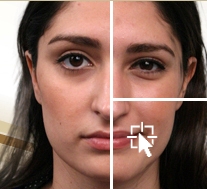 As of January 2014 Affectiva, a facial expression analysis firm renewed its multi-million, multi-year agreement with Millward Brown. Millward Brown will use Affectiva’s technology in their automated facial coding software that they implement for their Link Clients, which allows them to validate the performance of their advertising and identify strengths and weaknesses.
As of January 2014 Affectiva, a facial expression analysis firm renewed its multi-million, multi-year agreement with Millward Brown. Millward Brown will use Affectiva’s technology in their automated facial coding software that they implement for their Link Clients, which allows them to validate the performance of their advertising and identify strengths and weaknesses.
Graham Page, head of Millward Brown’s consumer neuroscience practice, said: “The challenge with neuromarketing to date is that it has not been able to operate at the scale and price point that are necessary in the day-to-day market research world. By including facial coding with Link we’re able to make neuromarketing scalable for the first time.”
In a recent blog we touched on the new path advertising is taking to read a person’s emotions, and Brown is using Affectiva’s technology to stay ahead of the competition. With this agreement, Affectiva said that its Affdex automated facial coding “will be standardised in all ad copy analysis” for Millward Brown’s Link test clients.
How does this technology work?
Affdex uses webcams to record and analyse a person’s emotional state while they are viewing ad content. Millward Brown and Affectiva first partnered in 2012. Millward Brown said it conducted more than 3,000 facial coding studies last year, compared to less than 400 the year before.
“It’s been interesting to see that measuring people’s facial expressions in response to an ad seems to be able to capture subtle negative responses that are not necessarily reported elsewhere in Link but which end up being really important to the ad’s success in-market,” commented Page.